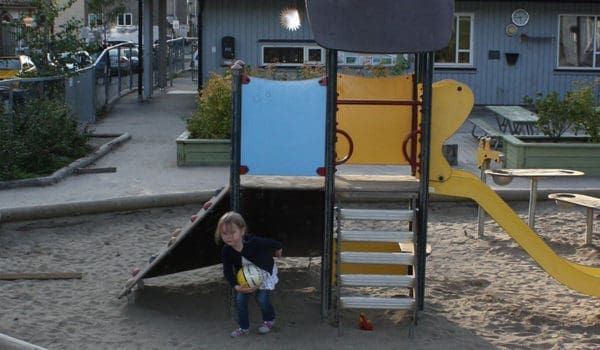The prevalence of childhood asthma has increased over the past decades. It is now the most common chronic illness in children and the leading cause of pediatric hospitalization worldwide.
Numerous studies have indicated that exposure to traffic-related air pollution is associated with the increase in the incidence of childhood asthma or the development of asthma symptoms.
Norwegian toddlers sleep outdoors
In Norway, children in kindergartens spend significant time outdoors under all weather conditions, and smaller children often sleep outdoors in their stroller. There is thus a natural concern about the quality of outdoor air. Especially during winter and spring, kindergartens in Oslo that are situated close to streets with busy traffic, or in areas where wood burning is used for house heating, can experience many days with bad air quality. During these periods, updated information on air quality levels can help the kindergarten teachers to plan appropriate outdoor activities and thus protect children’s health.
During the last decade, the development of low-cost monitoring platforms has seen significant growth. Low-cost sensor nodes have a lower price than reference instrumentation and have the advantage over other traditional methods, such as diffusive samplers, that they can monitor at high temporal resolution. This enables observations at high spatial resolution in near-real-time and provides an opportunity to continuously monitor air quality at places of interest like kindergartens.
Study in Oslo kindergartens
Senior scientist Núria Castell and her colleagues installed 17 low-cost air quality nodes in kindergartens in Oslo. These nodes are smaller, cheaper and less complex to use than traditional equipment. Performance evaluation shows that while they are less accurate and suffer from higher uncertainty than reference equipment, after calibration and quality data assurance, they still can provide reliable coarse information about local pollution.
“In order to provide near-real time high-resolution spatial maps of air quality, we developed an approach based on data fusion techniques”, Castell explains.
This allowed for combining the low-cost sensor hourly observations (representing temporal variability) with a characterization of spatial distribution derived from an air quality model. Thus, the scientists obtained a reflecting short-term air pollution variability (see Figure 1).

“We made use of focus groups in order to obtain feedback from local administration, kindergarten staff and parents about their need related to air quality information in kindergartens”, Castell continues.
The scientists were specifically interested in the focus group members’ opinion on the air quality data generated in this study. Many expressed concern about the data quality, but most agreed that having updated information on the air quality in the surroundings of kindergartens can help them to reduce children’s exposure to air pollution.
What now?
There is an increasing interest in receiving personalized air quality information to change kindergarten practices to protect children’s health.
“The outlook for low-cost sensor nodes is promising, Castell says. “We have demonstrated the big potential that lies within this new technology to provide localized real-time air quality information, especially when combining it with data fusion techniques.”
